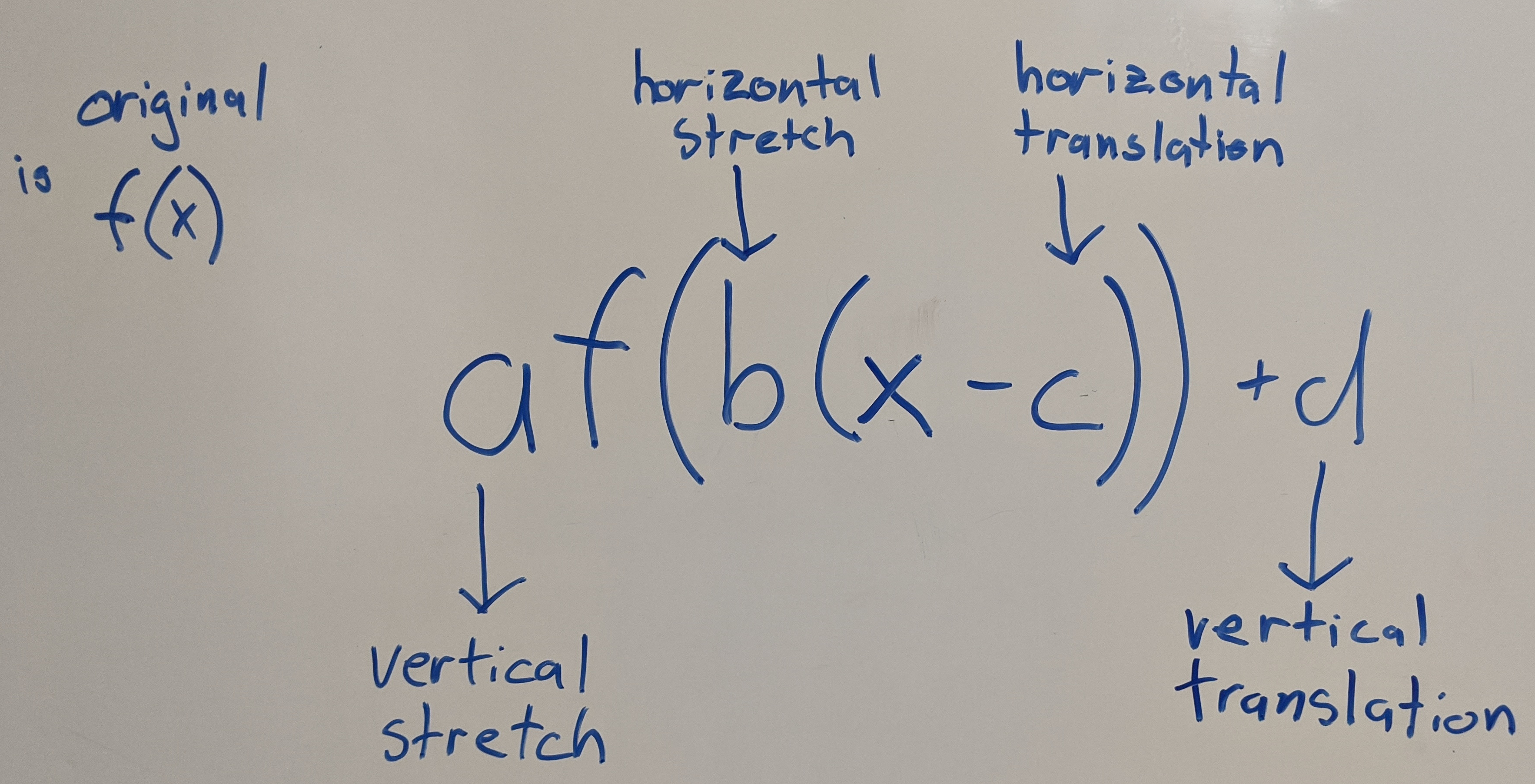January 01, 2020 / by Adam Mayhew / In Math 30-1
Transformations Made Easy part 1
This two part series on transformations serves as an overview/review for someone already familiar with transformations. It is not meant as to be an introduction.
All of transformations boils down to one simple formula seen in the picture above. af(b(x-c))+d. If you know what each variable does you know it all. It’s important to realize that there are only four important variables in the equation. That is because we are applying the transformations to f(x), which in this case, is the original graph. That means the f and the x in our equation are not transformations. This gives us a, b, c, and d as our transformation variables.
The easiest way to keep track of these variables is by “outside” and “inside”. The a and the d are both outside the brackets in the original f(x) and they do vertical transformations. The b and the c are inside the brackets and do horizontal transformations.
This is part one of our golden rule.
- Outside = Vertical stuff.
- Inside = Horizontal stuff.
The next thing to remember is that anything that is multiplied is a stretch, and anything added is a translation. That means a and b are stretches, and c and d are translations. This is also the definition of a stretch and a translation. A stretch means: take a point or graph and multiply the coordinates. We’ll go into detail on this in the next lesson.
So part two of our golden rule is this:
- Multiplication = stretch.
- Addition/subtraction = translation
It’s also important to note that there is very little difference between a stretch and a reflection. They are both multiplication. A reflection is there if the a or b value has a negative attached.
Finally one last thing to remember is that horizontal stuff is backwards. If you see f(x-5) in your equation it is actually 5 to the right, the opposite of the sign. And if you see f(2(x)) it is actually a horizontal stretch of 1/2. You flip the b value upside down. (this is known as taking the reciprocal).
So the golden rule part 3 is:
- Everything horizontal is backwards
So we have our formula af(b(x-c))+d and our golden rule on how to apply it:
- outsides = vertical
- insides = horizontal
- multiplication = stretch
- addition/subtraction = translation
- horizontal stuff is backwards
Lets take a look at some examples.

In this picture you can see that the 2 and the 5 are outside and are vertical transformations. The 3 and the 4 are inside so they are horizontal. They are also horizontal so they are modified. A b value of 3 is a factor of 1/3 and a -4 is 4 units to the right.

This example involves some fractions. The vertical transformations are still both outside and normal but the inside horizontal stretch needs to be flipped and the +2 ends up being 2 to the left.

This is what it looks like with only vertical transformations. There is also a negative included with the 3 which means there is a vertical reflection as well as a stretch.

This is what it looks like with only horizontal transformations. It also includes a horizontal reflection with the stretch.

Finally it is important to note that horizontal transformations have to be written in f(b(x-c)). f(bx-c) is very incorrect and must be factored in order to work.
So there you have it. A basic guide to understanding transformations. In part two of transformations you will learn how to apply transformations to actual graphs. This by no means covers everything, for that you’ll need to contact me and book a class!
